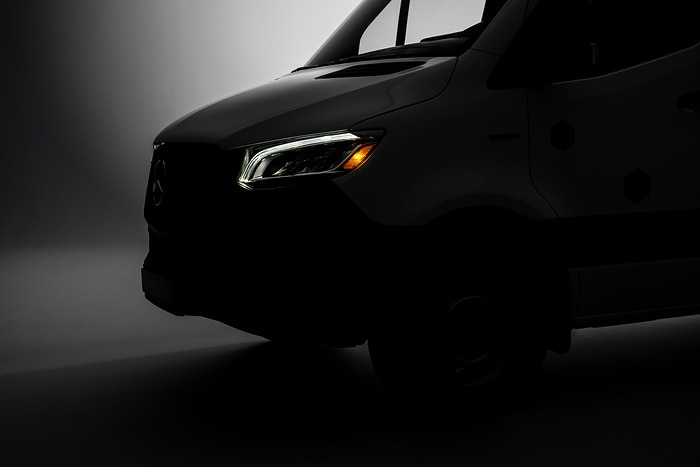- New Mercedes-Benz eSprinter will celebrate its world premiere at the beginning of February 2023; final test drives are currently taking place
- Real-world conditions of an express delivery: Pre-production vehicle completes 475-kilometre test drive from Stuttgart to Munich and back – with only one battery charge and without recharging
- TÜV Süd confirms a consumption of 21.9 kWh per 100 km for the test drive
- Triad of efficiency, range and load capacity makes the new Mercedes-Benz eSprinter a versatile all-rounder
A pre-production vehicle of the new Mercedes-Benz eSprinter completed a special test drive on 19 October 2022: With only one battery charge and without recharging, the route led from the Mercedes-Benz Museum in Stuttgart to Munich Airport and back again. This corresponds to a distance of 475 kilometres with a power consumption of 21.9 kWh per 100 kilometres. And this despite the fact that the route is extremely demanding in terms of fuel consumption due to the high proportion of motorways and the climb up the Swabian Jura. Conclusion of the test drive: The new Mercedes-Benz eSprinter is convincing.
The new Mercedes-Benz eSprinter will be launched with three different battery sizes. A pre-production vehicle with the largest of the three variants was selected for the test drive. With a view to a practical vehicle configuration for CEP use (courier, express, parcel service), an extra-long eSprinter with a high roof was selected to demonstrate: The new Mercedes-Benz eSprinter is trimmed for efficiency. Numerous configuration options and a high load capacity combined with a long range make the eSprinter one of the most flexible large electric vans in the world.
The test drive
The consumption measurement took place on 19 October 2022. In order to create real conditions for an express delivery between Stuttgart and Munich, the journey was not completed on a closed-off test track, let alone a test bench, but in inner-city traffic as well as on federal roads and motorways. The topography was not optimised either; for example, the climb up the Swabian Jura was deliberately left in the route. An inspector from TÜV Süd sat in the passenger seat next to the Mercedes-Benz test driver during the entire test drive. As a neutral testing organisation, TÜV Süd certifies that the consumption of 21.9 kWh per 100 kilometres achieved on this test drive from Stuttgart to Munich and back according to the instrument cluster was achieved with one battery charge and that the vehicle was in due order.
The route
In order to recreate a typical application from the CEP industry, the drive went from the











